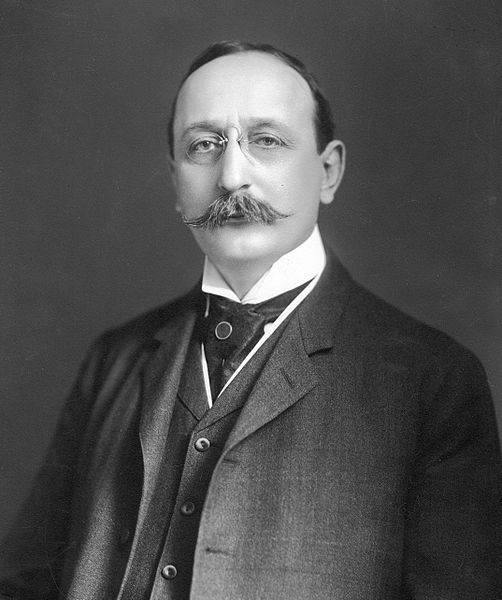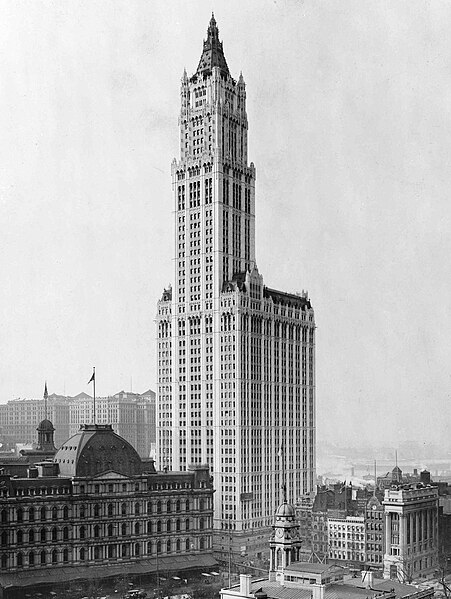Cass Gilbert was an American architect. An early proponent of skyscrapers, his works include the Woolworth Building, the United States Supreme Court building, the state capitols of Minnesota, Arkansas, and West Virginia, the Detroit Public Library, the Saint Louis Art Museum and Public Library. His public buildings in the Beaux Arts style reflect the optimistic American sense that the nation was heir to Greek democracy, Roman law and Renaissance humanism. Gilbert's achievements were recognized in his lifetime; he served as president of the American Institute of Architects in 1908–09.
Gilbert in 1907
Cass Gilbert standing in front of the drum atop the Minnesota State Capitol before its dome was placed
Gilbert's Woolworth Building in New York City was the world's tallest building when completed in 1913.
90 West Street, New York City, 1903
The earliest stage of skyscraper design encompasses buildings built between 1884 and 1945, predominantly in the American cities of New York and Chicago. Cities in the United States were traditionally made up of low-rise buildings, but significant economic growth after the American Civil War and increasingly intensive use of urban land encouraged the development of taller buildings beginning in the 1870s. Technological improvements enabled the construction of fireproofed iron-framed structures with deep foundations, equipped with new inventions such as the elevator and electric lighting. These made it both technically and commercially viable to build a new class of taller buildings, the first of which, Chicago's 138-foot (42 m) tall Home Insurance Building, opened in 1885. Their numbers grew rapidly, and by 1888 they were being labelled "skyscrapers".
The Flatiron Building, New York City, shortly after its construction in 1903
The Produce Exchange of 1884 made structural advances in metal frame design.
Early skyscraper caisson foundations, 1898
Chicago's Home Insurance Building, often considered the world's first skyscraper, was completed in 1885








